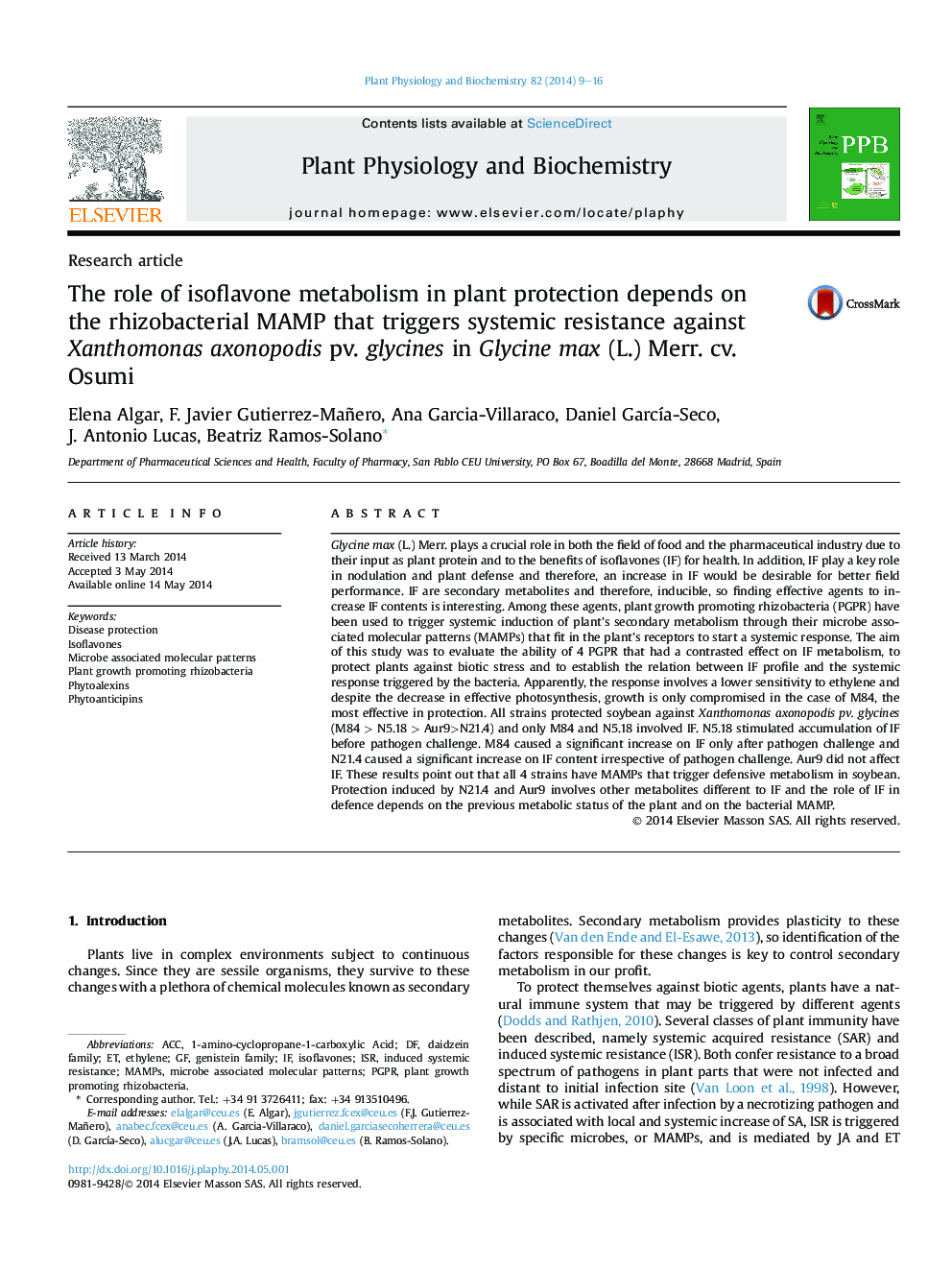| کد مقاله | کد نشریه | سال انتشار | مقاله انگلیسی | نسخه تمام متن |
|---|---|---|---|---|
| 2016081 | 1541939 | 2014 | 8 صفحه PDF | دانلود رایگان |

• 4 PGPR trigger soybean defensive metabolism effective against bacterial pathogen.
• Pseudomonas fluorescens N21.4 is an efficient enhancer of isoflavone content.
• Isoflavones act as phytoalexins or as phytoanticipins depending on the MAMPs.
Glycine max (L.) Merr. plays a crucial role in both the field of food and the pharmaceutical industry due to their input as plant protein and to the benefits of isoflavones (IF) for health. In addition, IF play a key role in nodulation and plant defense and therefore, an increase in IF would be desirable for better field performance. IF are secondary metabolites and therefore, inducible, so finding effective agents to increase IF contents is interesting. Among these agents, plant growth promoting rhizobacteria (PGPR) have been used to trigger systemic induction of plant's secondary metabolism through their microbe associated molecular patterns (MAMPs) that fit in the plant's receptors to start a systemic response. The aim of this study was to evaluate the ability of 4 PGPR that had a contrasted effect on IF metabolism, to protect plants against biotic stress and to establish the relation between IF profile and the systemic response triggered by the bacteria. Apparently, the response involves a lower sensitivity to ethylene and despite the decrease in effective photosynthesis, growth is only compromised in the case of M84, the most effective in protection. All strains protected soybean against Xanthomonas axonopodis pv. glycines (M84 > N5.18 > Aur9>N21.4) and only M84 and N5.18 involved IF. N5.18 stimulated accumulation of IF before pathogen challenge. M84 caused a significant increase on IF only after pathogen challenge and N21.4 caused a significant increase on IF content irrespective of pathogen challenge. Aur9 did not affect IF. These results point out that all 4 strains have MAMPs that trigger defensive metabolism in soybean. Protection induced by N21.4 and Aur9 involves other metabolites different to IF and the role of IF in defence depends on the previous metabolic status of the plant and on the bacterial MAMP.
Journal: Plant Physiology and Biochemistry - Volume 82, September 2014, Pages 9–16